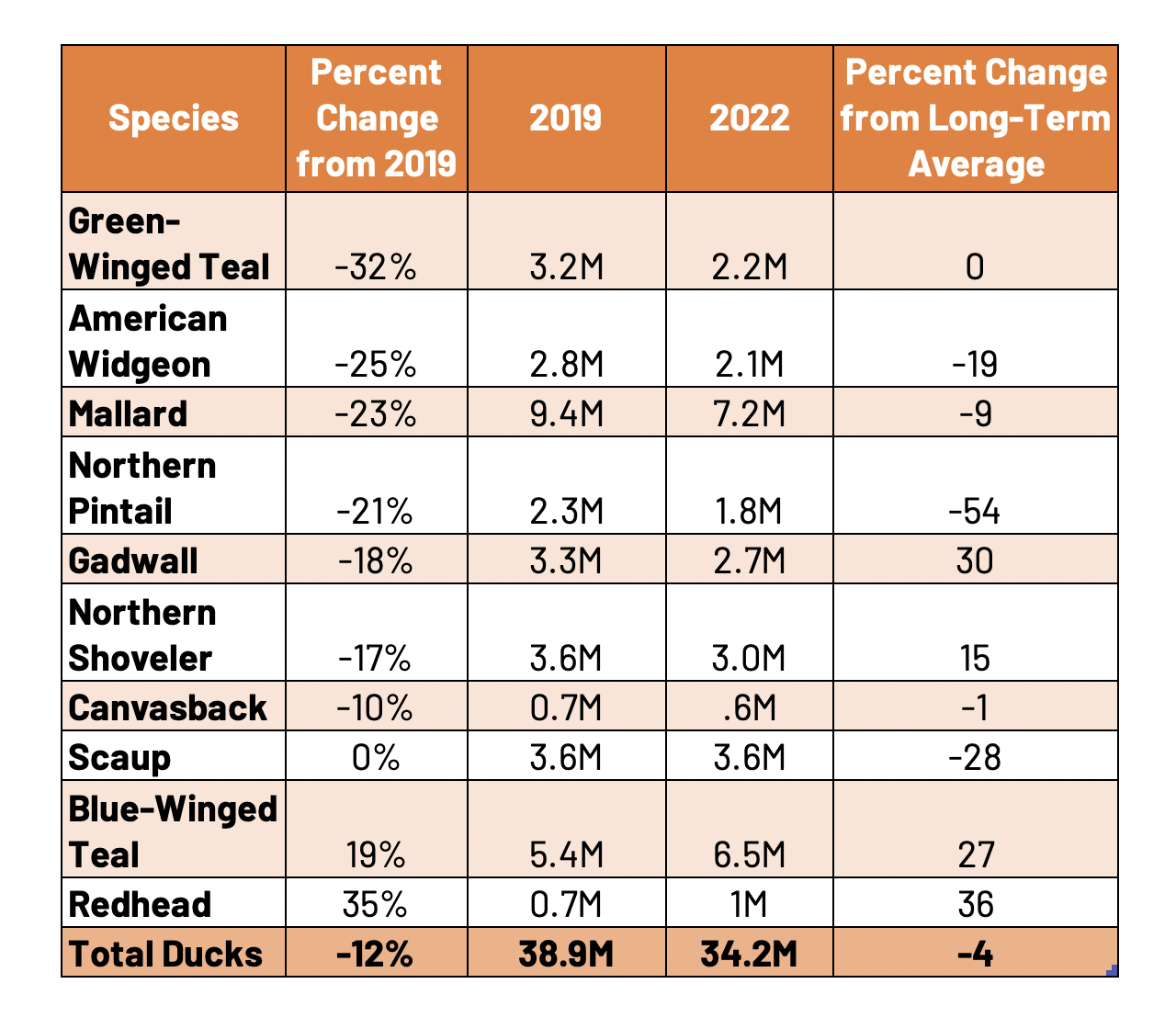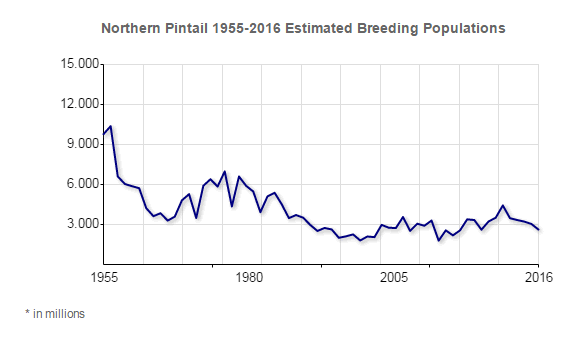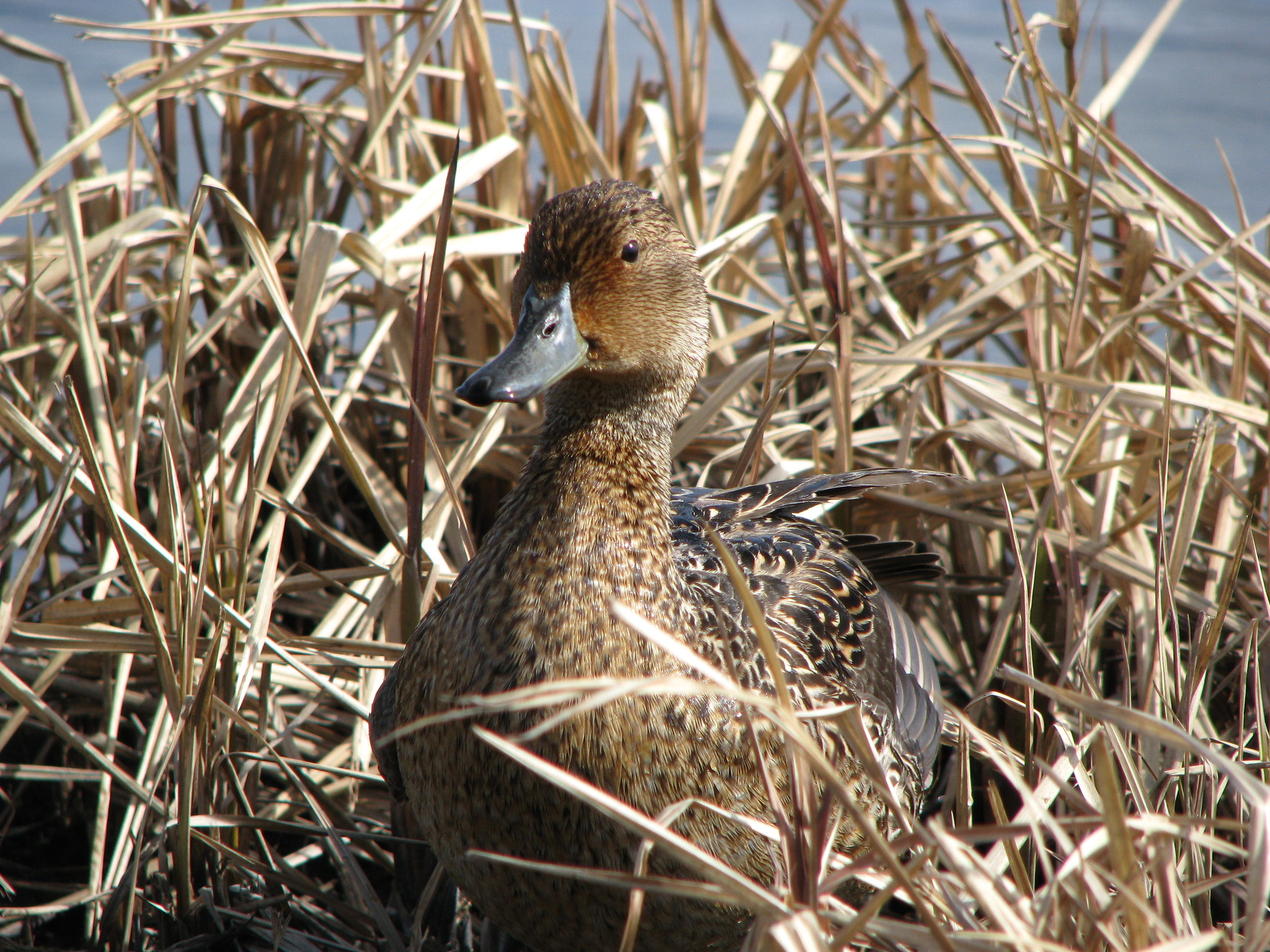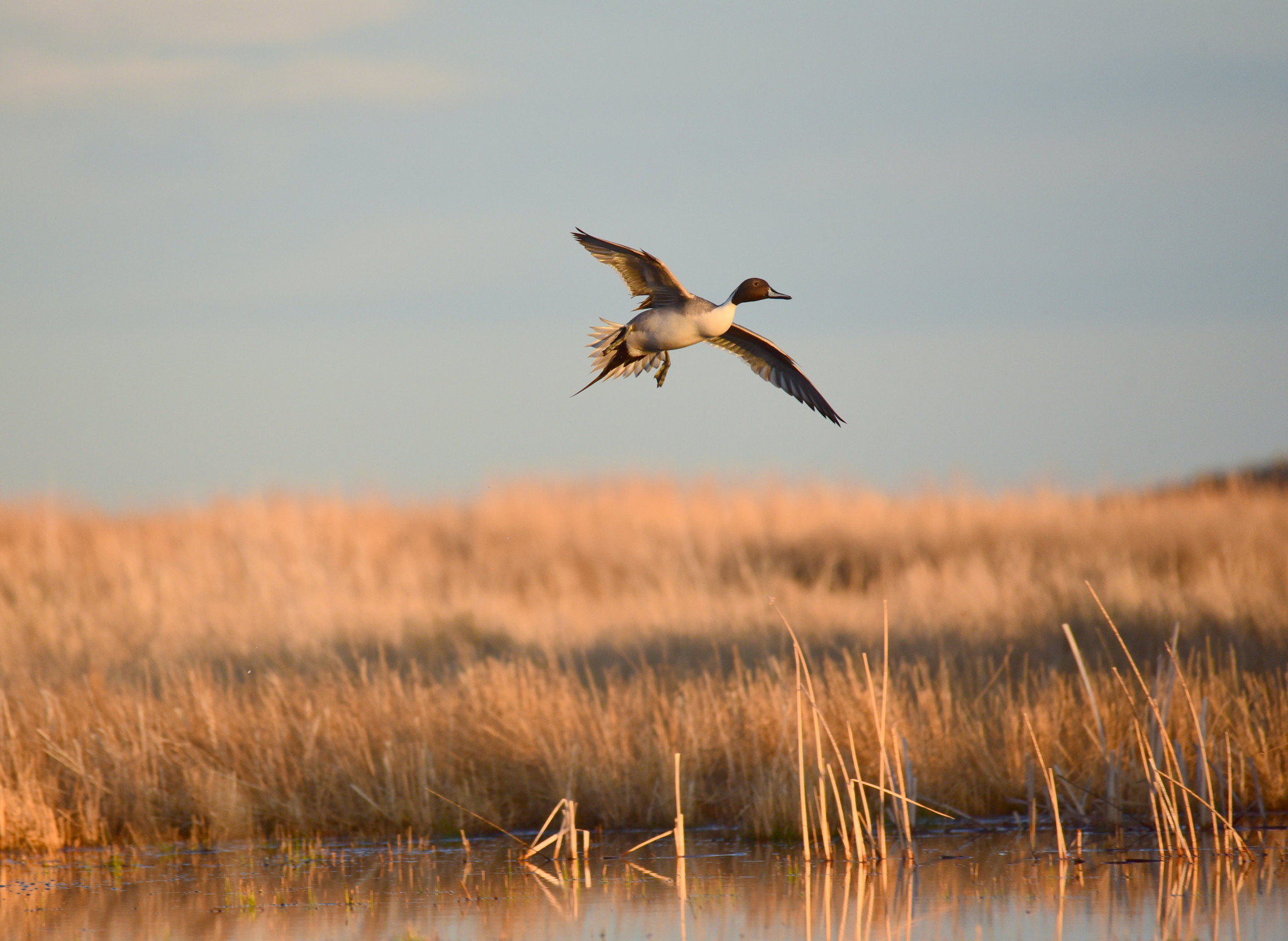In August, the United States Fish and Wildlife Service released its first waterfowl survey since 2019. The overall results of this year’s duck count weren’t exactly encouraging, but the continued decline of Northern pintails was especially alarming to hunters and biologists. .
Pintails have been on the decline since the 1950’s, and this year their numbers were down 21 percent from 2019 and 54 percent lower than the long-term average. The continent’s pintail population currently sits just above 1.78 million birds, according to this year’s count, which is dangerously close to the 1.75 million number that would trigger a closed hunting season for the birds.

What exactly is behind the species’ decline is one of the more pressing questions in North American waterfowl management today. As researchers try to answer this question, they point to some of the more obvious reasons along with a lesser-known theory behind the ongoing decline in pintail numbers.
For All the Obvious Reasons
One of the biggest factors contributing to the decline of pintail numbers in North America has been the prolonged drought affecting the Prairie Pothole Region. This is the most important waterfowl breeding area on the continent, encompassing more than 250 thousand square miles of shallow wetlands spread across five states (Iowa, Minnesota, Montana, South Dakota, North Dakota) and three Canadian provinces (Alberta, Saskatchewan, Manitoba.) In a normal year the PPR supports more than 50 percent of all the continent’s migratory waterfowl, according to the National Wildlife Federation.
Over the past few years, however, record levels of drought have sapped the region of water. This has led to massive losses of wetland habitat for ducks, geese, and other birds, which typically migrate to the area in early spring to breed.
“Given the widespread dry conditions last year across most of the prairies where ducks breed, it’s not surprising that the breeding population number is lower than it had been throughout most of the 2010s,” says Dr. Chris Nicolai, a waterfowl scientist for Delta Waterfowl.

The other major factor affecting wetland habitat in the PPR is the development of croplands in the region. In Canada, the cropland cover has increased by roughly 30 percent in the last 25 years alone, according to Ducks Unlimited. This issue is mirrored on the U.S. side of the PPR, where wetlands have slowly but steadily been converted to agricultural fields since the 1970s.
“Pintails will readily nest in cropland, much more so than other pre-nesting ducks, and when they do that, their nests are often destroyed by cultivation and spraying activities,” explains Steve Adair, chief scientist with Ducks Unlimited.
Looking for Pintails in the Wrong Places
Although drought and agricultural development are the most obvious reasons for the ongoing decline in pintail populations, researchers speculate that other factors may play a role as well. According to Dr. Nicolai, one issue is that biologists might be miscounting the birds by looking in the wrong places.
“It could be they’re losing habitat, or it could be they’re actually gaining habitat in the north due to climate change,” says Nicolai. “And they’re just starting to move out of the areas we’re surveying, and we’re missing them.”
Dr. Nicolai emphasizes that this theory isn’t based published research. But over the past few years, as managers have watched drought take its toll on the PPR, many of them have agreed that pintails are more likely to move north to search for suitable breeding habitats in lands closer to the Arctic. The most recent duck count highlights this shift in their range, as biologists recorded the highest number of pintails in the northern parts of Canada and the Yukon Region.
With pintails moving further north each season, they may slowly be moving outside the survey region, Nicolai explains—which would mean fewer recorded birds in each survey. And although this theory might only account for a small portion of their declines, it pulls at another critical issue influencing their numbers: As pintails move further north, the ducks tend to produce fewer hatchlings.

“In drier years, many pintails ‘overfly’ the prairies and settle in the Boreal Forest of Alaska and northern Canada or continue even farther north to the Arctic lowland tundra, where wetland conditions are generally more stable than on the prairies,” writes Ducks Unlimited research scientist Jim Devries. “However, this decision seems to come at a cost. Fewer young are produced in years when large numbers of pintails settle in northern breeding areas.”
Nicolai recounts his own experiences in the northern regions of Canada that lie outside the survey range, and he says he’s personally seen large numbers of pintails there. The trouble is finding their nests.
“This is the part that makes me scratch my head,” says Nicolai. “We’ve counted a lot more pintails in the north when the prairies are dry, but I’ve never met a biologist that said they found more pintail nests in those years.”
For pintail hens, finding suitable nesting habitats in the north means spending more time migrating and expending substantially more energy before breeding season begins. This may be causing hens to lay fewer eggs, spend less time re-nesting, or skip the breeding season altogether.
Read Next: A New Telemetry Study Could Solve the Mysterious Decline of Atlantic Flyway Mallards
“The further north you get, you do have a shorter window to nest, just because those wetlands ice out later and they also freeze up earlier,” says Adair. “We see northern birds typically being a little less productive than birds that primarily nest in the prairies.”
One potential solution would be for the USFWS and Canadian Wildlife Service to expand their summer survey range further to the north, but Nicolai says that so far, nothing concrete has been announced by either agency.
Some states, including Texas and California, conduct mid-winter surveys that can help inform population estimates. However, since these states aren’t working collaboratively, it’s difficult to use these surveys to gauge mid-winter pintail numbers on a national level.
Good News on the Prairie
Although this year’s duck count is unsettling, waterfowl managers agree that there are reasons to be optimistic for the future. Late-season precipitation throughout much of the central United States brought some much-needed water to the PPR. This year’s total pond estimate in the region was 9.9 million, which represents a nine percent increase from 2019 and is closer to the long-term average.
“The potential is very high that we’re going to add a lot of ducks to the population now, which gives us the optimism for next year,” says Nicolai. “The years when duck production is strong like this year should generally provide the best hunting seasons.”

